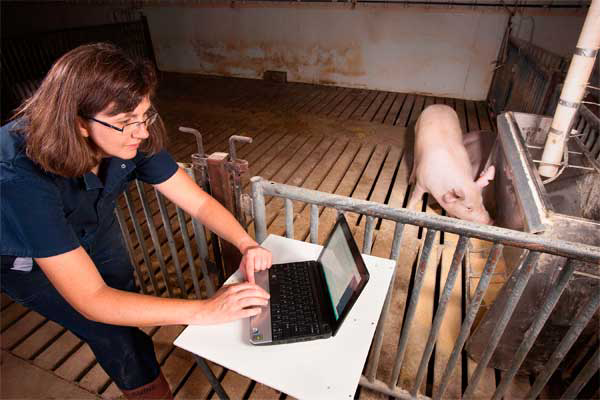Monitoring the feeding behaviour of pigs

Scientists with the US Department of Agriculture (USDA) have developed a new system that monitors the feeding behaviour of pigs, such as time spent eating, number of eating times per day and the duration of each eating session.
The system, designed to work in an industry setting, includes an ear tag applied to each animal, monitoring equipment and data recording and storage. It uses software and hardware that incorporates standard radio-frequency identification (RFID) technology and a commercial reader.
In one study, antennas were mounted on standard swine feeders in six pens that each held 40 pigs. In addition to collecting feeding behaviour data, video cameras were used to evaluate the durability of the system, which was shown to be dependable.
Scientists are using this data to determine the normal day-to-day variation in feeding behaviour. By determining an animal’s normal eating behaviour, it might be easier to detect a sick animal when it starts spending less time at the feeder. These animals can then be treated early to help prevent severe illness. Information gathered might also be used to improve management and establish genetic differences within a herd, according to the researchers.
The low-cost system was first used to monitor feedlot cattle and has been adapted to grow-finish swine. Individual animal feeding behaviour can be measured without any outside influence,
Scientists plan to use the system in future studies to examine feeding behaviour as it relates to age, gender, weight gain and the health of animals.
Read more about this research in the July 2013 issue of Agricultural Research magazine











